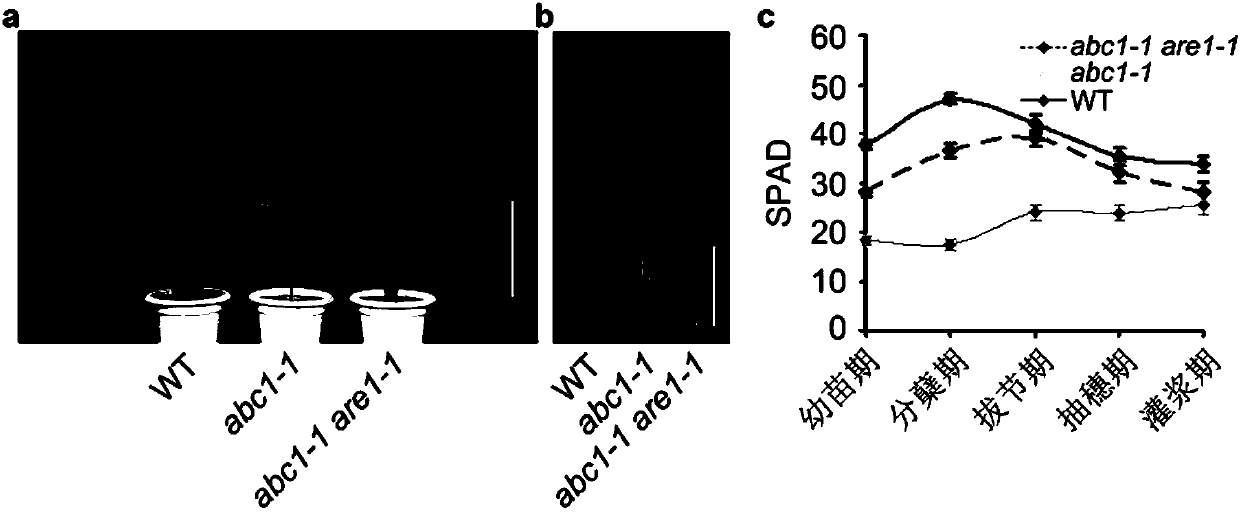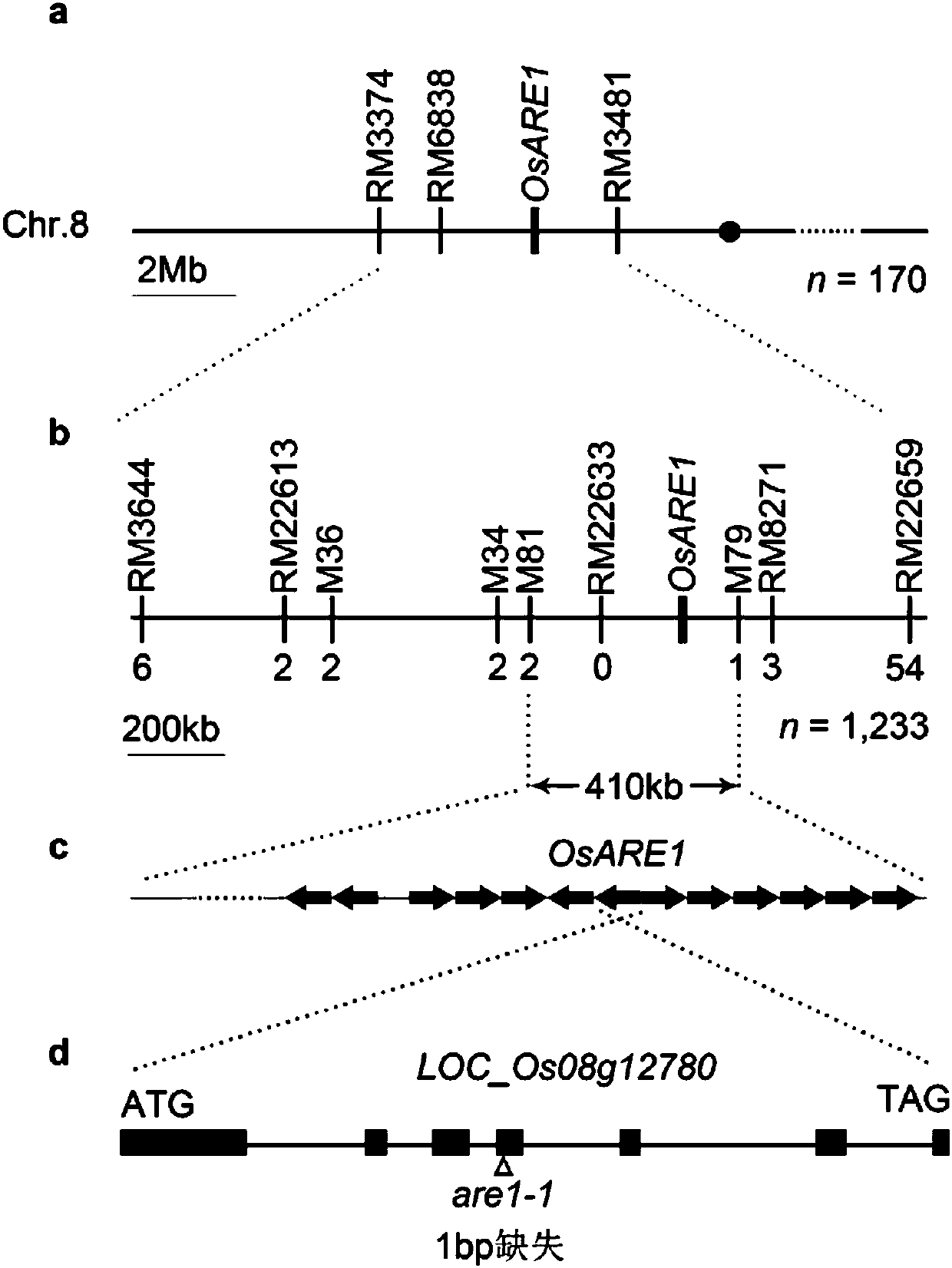Application of protein OsARE1 in regulating plant senescence
A plant senescence, protein technology, applied in applications, plant peptides, plant genetic improvement, etc.
- Summary
- Abstract
- Description
- Claims
- Application Information
AI Technical Summary
Problems solved by technology
Method used
Image
Examples
Embodiment 1
[0129] Embodiment 1, the genetic screening of abc1-1are1-1 double mutant
[0130] Cytokinins are an important class of plant hormones that participate in the regulation of various aspects of plant growth and development, including delaying leaf senescence. The inventors of the present invention screened a mutant with abnormal cytokinin response through chemical mutagenesis of rice variety Nipponbare (NPB), and named it abnormal cytokinin reponse1 mutant (abc1-1 mutant) (Yang et al. al., 2016). The abc1-1 mutant has obvious growth and development defect phenotypes, including plant dwarfing, reduced tiller number, and yellow leaves. lc7, early senescence7 (es7) and spotted leaf32 (spl32) (Agron. J. Zeng et al., 2017; Bi et al., 2017; Chen et al., 2016; Sun et al., 2017). The ABC1 gene encodes a chloroplast-localized Fd-GOGAT protein, which is a key enzyme that catalyzes nitrogen assimilation. The results of the study showed that the ABC1 / Fd-GOGAT gene function deficient mutan...
Embodiment 2
[0132] Embodiment 2, the phenotype analysis of are1-1 single mutant
[0133] In order to obtain the are1-1 single mutant, the inventors of the present invention backcrossed the abc1-1are1-1 double mutant with the rice variety Nipponbare three times to obtain BC 2 f 2 Separate groups. by BC 2 f2 Segregate populations for phenotype and linkage analysis to obtain the are1-1 single mutant.
[0134] Compared with the rice variety Nipponbare, the are1-1 single mutant had no obvious phenotypic differences in the vegetative growth stage ( figure 2 middle a, b and c); after entering the heading stage, the plant height of the are1-1 single mutant gradually increased, the number of tillers slightly decreased, the heading stage was delayed by about 3 to 5 days, and the chlorophyll content of the leaves increased significantly ( figure 2 middle d and e). In order to clarify whether the are1-1 mutation affects the leaf senescence process, the inventors of the present invention analyz...
Embodiment 3
[0135] Embodiment 3, map-based cloning of OsARE1 gene
[0136] In order to determine the nature of the are1-1 mutation, the inventors of the present invention performed a backcross analysis of the are1-1 single mutant with the rice variety Nipponbare. 18 hybrid F strains obtained by backcrossing 1 Progeny plants all showed the phenotype of rice variety Nipponbare, and in F 2 Plants with normal and late senescence phenotypes in segregating populations exhibited a phenotypic segregation ratio close to 3:1 (561:196 = 2.86:1; χ 2 c2 0.05 = 3.84). Thus, the are1-1 single mutant is caused by a recessive mutation of a single nuclear gene.
[0137] The inventors of the present invention isolated and identified the candidate OsARE1 gene by map-based cloning method. Genetic mapping populations were constructed using the abc1-1are1-1 double mutant and indica rice varieties Minghui 63 and Nanjing 6, respectively. Taking the late senescence phenotype of leaves as the selection index,...
PUM
 Login to View More
Login to View More Abstract
Description
Claims
Application Information
 Login to View More
Login to View More - R&D
- Intellectual Property
- Life Sciences
- Materials
- Tech Scout
- Unparalleled Data Quality
- Higher Quality Content
- 60% Fewer Hallucinations
Browse by: Latest US Patents, China's latest patents, Technical Efficacy Thesaurus, Application Domain, Technology Topic, Popular Technical Reports.
© 2025 PatSnap. All rights reserved.Legal|Privacy policy|Modern Slavery Act Transparency Statement|Sitemap|About US| Contact US: help@patsnap.com



